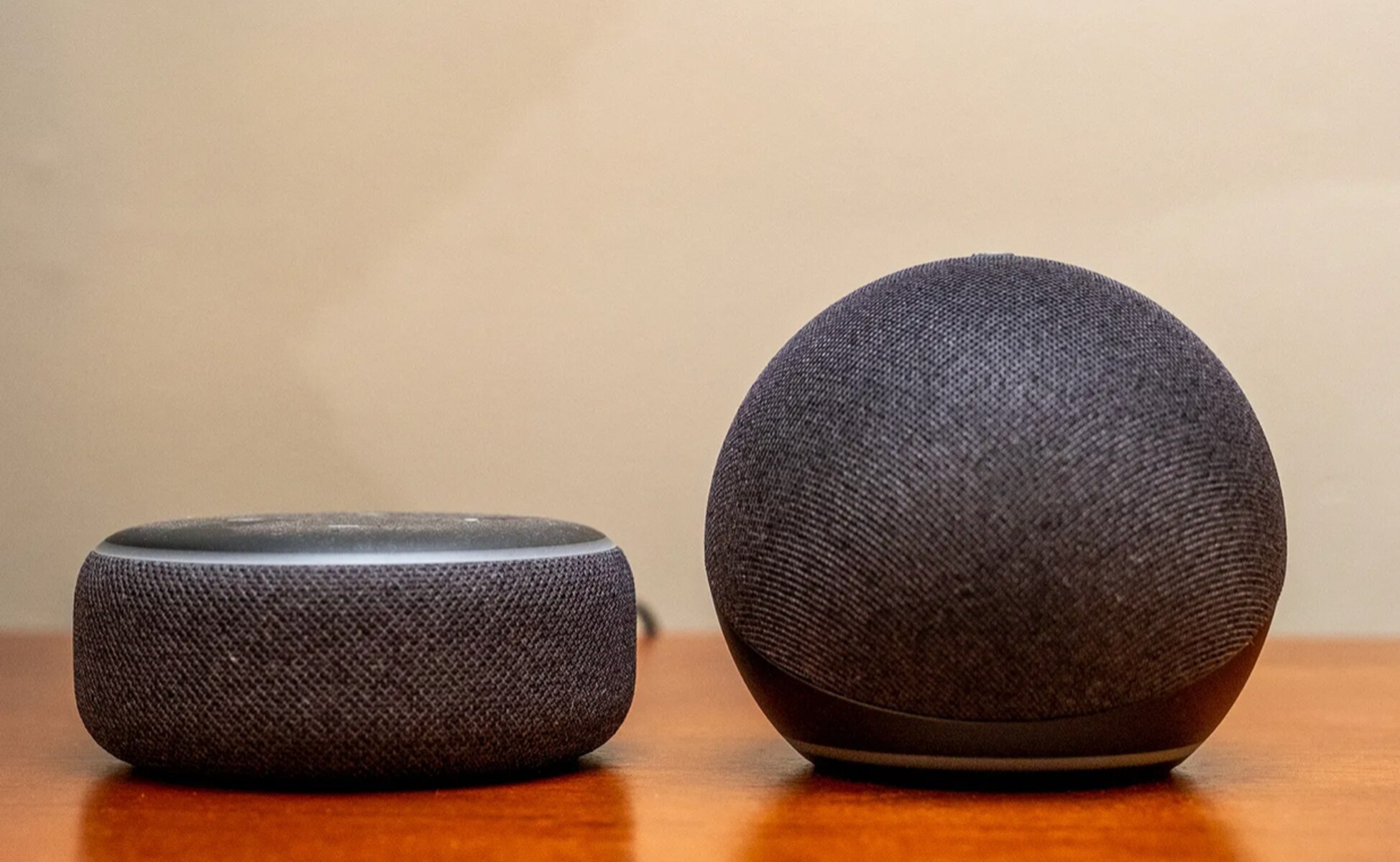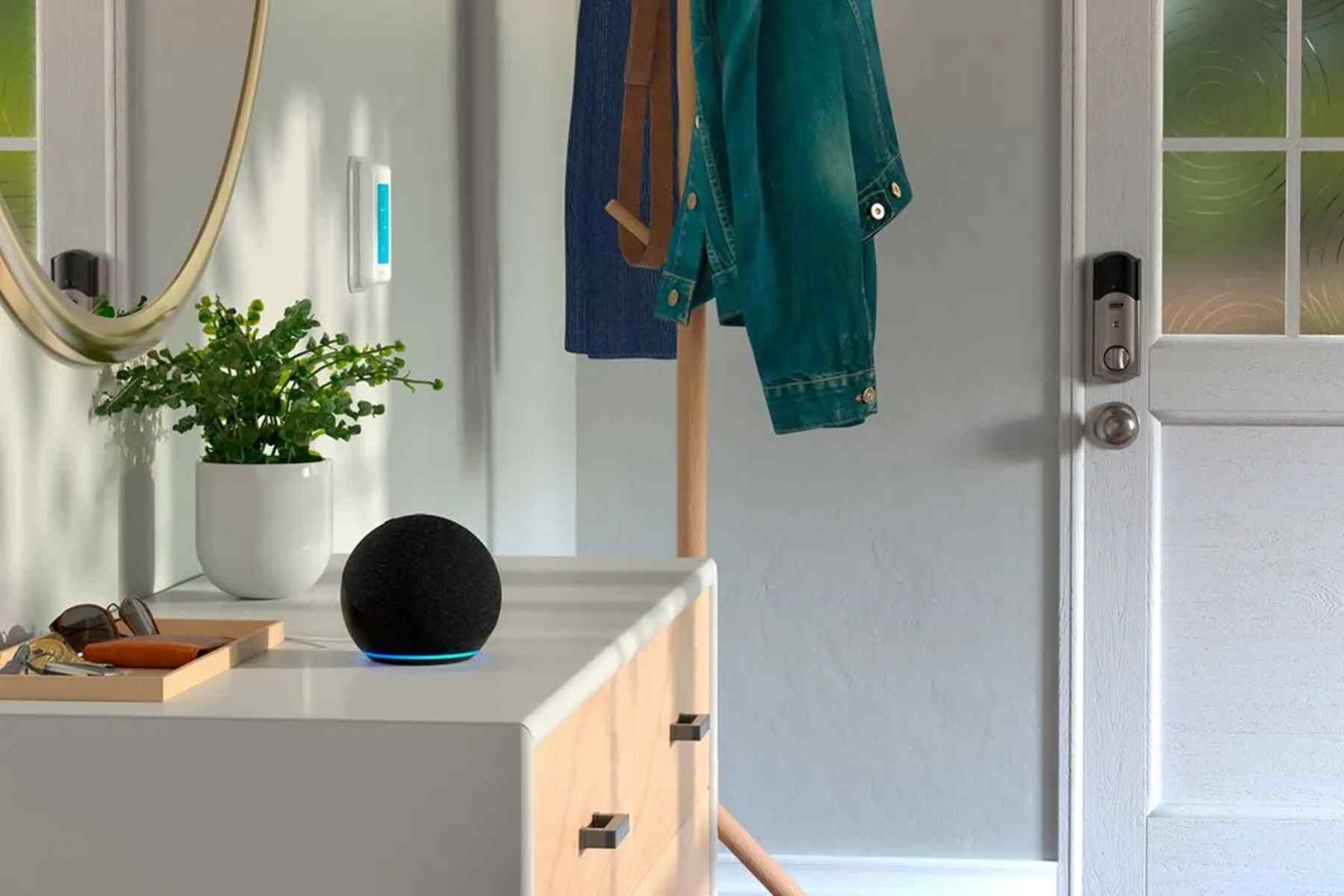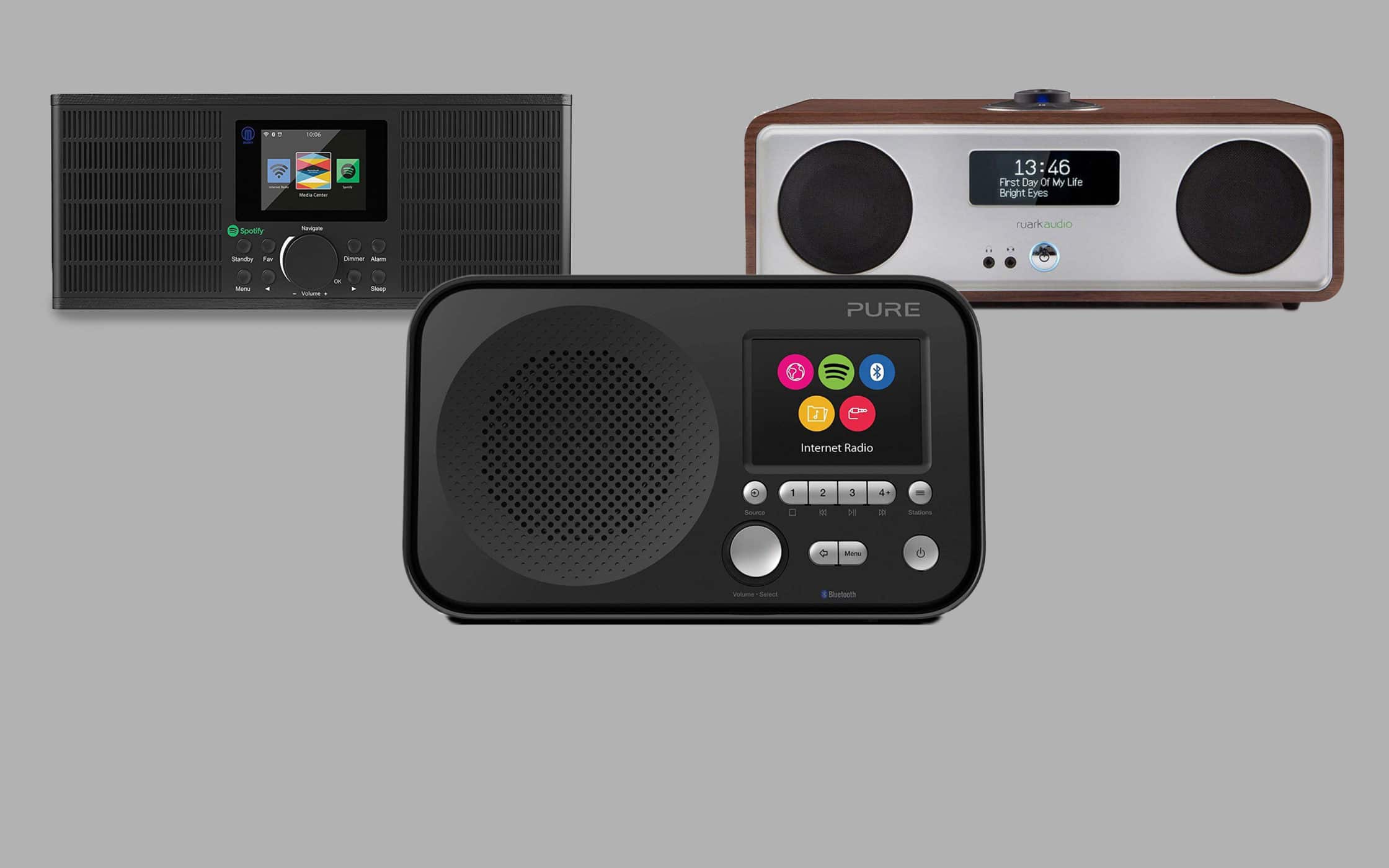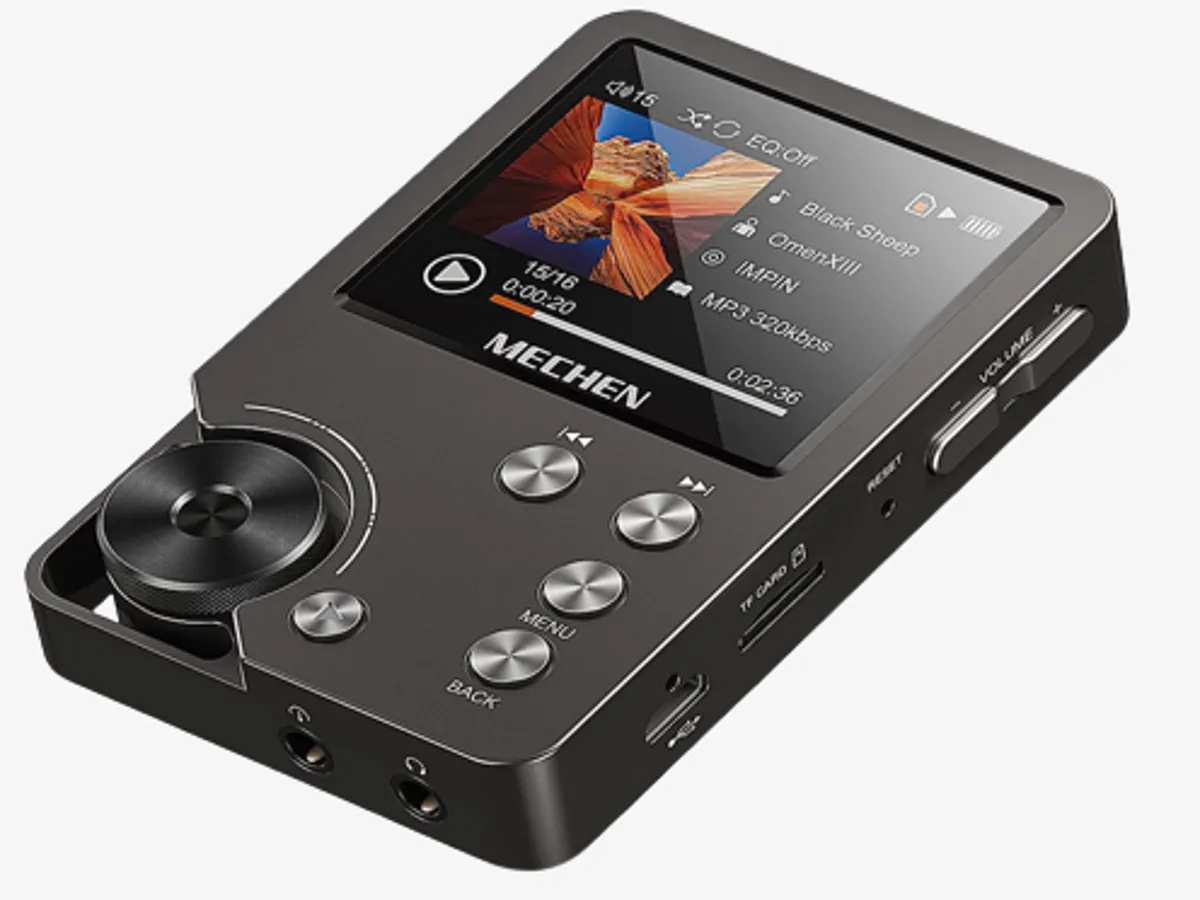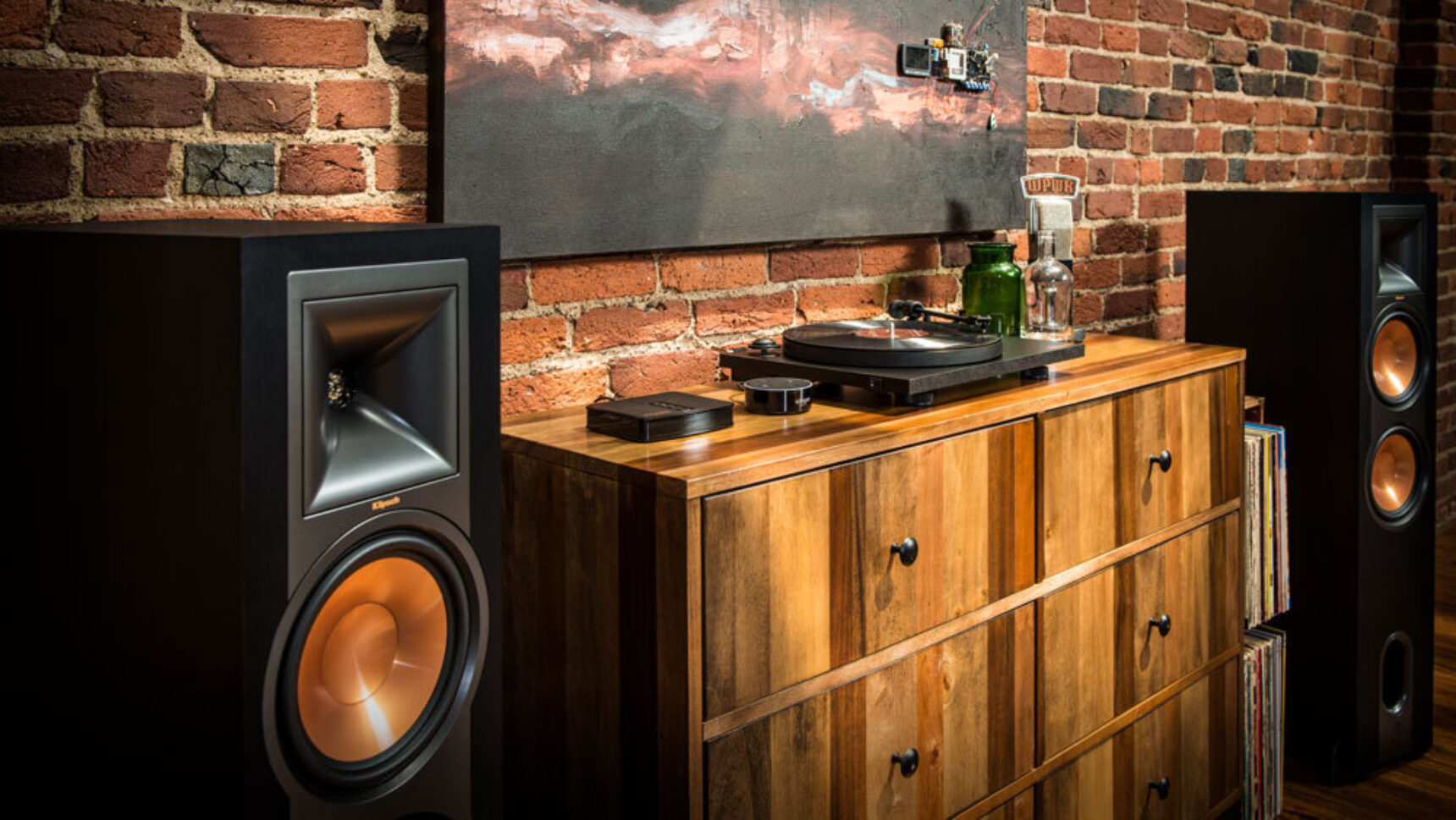Introduction
The rise of smart speakers has revolutionized the way we listen to music, access information, and interact with our devices. These voice-activated devices have become an essential part of our daily lives, offering convenience and accessibility like never before. While their primary function is often associated with playing music or answering questions, smart speakers are also excellent tools for enjoying radio programs.
Radio programs have long been a source of entertainment, news, and cultural exploration. From talk shows to music channels, radio has a unique charm that transcends generations. With the advent of smart speakers, the experience of listening to the radio has become even more immersive and convenient.
Whether you’re a fan of talk radio, sports commentary, or simply enjoying your favorite music station, smart speakers provide an easy and seamless way to access radio programs. Gone are the days of traditional radios or struggling to find the right frequency. With just a simple voice command, you can tune in to your favorite radio station and enjoy your preferred programs, all with the added advantage of hands-free control and voice customization.
In this article, we will evaluate and compare some of the top smart speakers in the market, focusing on their ability to play radio programs. We will explore the features, functionality, and performance of popular choices such as the Google Nest Hub, Amazon Echo Dot, Apple HomePod mini, and Sonos One. By understanding the strengths and limitations of each smart speaker, you can make an informed decision and choose the one that best suits your needs and preferences.
So, if you’re a radio enthusiast or simply looking to explore the world of radio through the convenience of a smart speaker, read on. Discover which smart speaker is the right fit for playing your favorite radio programs and revolutionize the way you experience audio content.
The Rise of Smart Speakers
In recent years, smart speakers have gained immense popularity and become a ubiquitous presence in households worldwide. These voice-controlled devices have revolutionized the way we interact with technology and have quickly become an integral part of our daily lives.
One of the main reasons behind the rise of smart speakers is the seamless integration of voice assistants into our homes. Amazon’s Alexa, Google Assistant, and Apple’s Siri have become household names, thanks to their ability to perform tasks, answer questions, and provide entertainment, all at the sound of our voice. Smart speakers act as the physical manifestation of these virtual assistants, allowing us to control our homes, access information, and enjoy multimedia content with incredible ease.
The convenience and accessibility offered by smart speakers have made them incredibly appealing to a wide range of users. Whether you’re tech-savvy or not, these devices are designed to be user-friendly, making them accessible to the masses. With a simple wake word, such as “Hey Google” or “Alexa,” you can activate your smart speaker and start issuing commands.
Moreover, the integration of smart home technology has further fueled the popularity of smart speakers. These devices act as a central hub, allowing users to control other smart devices, such as lights, thermostats, and security systems, with just a voice command. This level of automation and connectivity has transformed many homes into smarter, more efficient living spaces.
Another driving factor behind the rise of smart speakers is their versatility. In addition to playing music and providing information, these devices can perform a multitude of tasks. From setting reminders and timers to accessing the news and weather updates, smart speakers are a one-stop solution for many of our day-to-day needs.
It is also worth mentioning that smart speakers have become more affordable and accessible over time. With various pricing options and a wide range of models to choose from, users can find a smart speaker that fits their budget and requirements. This affordability has contributed to the widespread adoption of these devices and has made them accessible to a larger audience.
Overall, the rise of smart speakers can be attributed to their convenience, accessibility, versatility, and integration with smart home technology. As the technology continues to evolve and improve, we can expect smart speakers to become even more ingrained in our daily lives, transforming the way we interact with technology and enhancing our overall living experience.
Playing Radio Programs on Smart Speakers
Smart speakers offer a convenient and user-friendly way to enjoy your favorite radio programs. With just a voice command, you can tune in to your preferred radio station and listen to a wide range of content, including live broadcasts, music, talk shows, and more.
One of the primary methods of playing radio programs on smart speakers is through voice commands. You can simply ask your smart speaker to play a specific radio station, genre, or even a specific show. For instance, saying “Hey Google, play NPR” or “Alexa, play Classic Rock radio” will initiate the smart speaker to stream the desired radio program.
Many smart speakers also offer integration with popular radio streaming services, such as TuneIn, iHeartRadio, or Spotify. These services provide access to a vast selection of radio stations from around the world, allowing you to explore different genres, discover new shows, and personalize your radio experience. By linking your preferred radio streaming service to your smart speaker, you can enjoy seamless access to a virtually limitless range of radio content.
Furthermore, smart speakers often come equipped with additional features that enhance the radio listening experience. For example, some devices have built-in displays that show album artwork or provide visual information related to the current program. Others offer voice control over volume, playback, and even skipping songs or segments.
Additionally, smart speakers can be connected to other audio devices, such as soundbars or external speakers, to enhance the audio quality and create a more immersive listening experience. This is particularly beneficial for music enthusiasts who appreciate high-fidelity sound.
It’s important to note that while smart speakers offer a convenient way to access radio programs, they rely on a stable internet connection to stream content. Therefore, a reliable Wi-Fi connection is crucial to ensure uninterrupted playback and a seamless radio experience.
Overall, playing radio programs on smart speakers is a simple and enjoyable process. With voice commands, integration with radio streaming services, and additional features to enhance the listening experience, smart speakers have revolutionized the way we enjoy radio content in our homes. Whether you want to stay updated with the news, listen to your favorite music, or explore new shows and genres, smart speakers provide a versatile and accessible platform for radio enthusiasts.
Evaluating the Different Smart Speakers
When it comes to choosing the right smart speaker for playing radio programs, several factors need to be considered. Each smart speaker model offers its own set of features, performance, and compatibility, making it essential to evaluate the options before making a decision.
One popular smart speaker option is the Google Nest Hub. With Google Assistant at its core, the Nest Hub provides seamless integration with various radio streaming services, allowing users to play their favorite radio programs with ease. Additionally, the Nest Hub’s built-in display enhances the radio experience by showing album artwork and additional information related to the playing program.
The Amazon Echo Dot is another highly regarded smart speaker choice. Powered by Alexa, the Echo Dot offers an extensive selection of radio skills and integration with Amazon Music, TuneIn, and iHeartRadio. The Dot’s compact design and affordable price make it an attractive option for budget-conscious users seeking a solid radio listening experience.
For Apple enthusiasts, the Apple HomePod mini is an excellent choice. With Siri as its voice assistant, the HomePod mini provides seamless integration with Apple Music and offers a high-quality audio experience. While Apple’s smart speaker ecosystem is more limited in terms of radio service options, the HomePod mini excels in audio performance.
Lastly, Sonos One is a versatile smart speaker that supports a wide array of radio streaming platforms, including TuneIn, iHeartRadio, and more. Sonos speakers are known for their exceptional sound quality and can be connected to other Sonos devices for a multi-room audio setup, enhancing the radio listening experience throughout your home.
When evaluating smart speakers for playing radio programs, it is crucial to consider factors such as sound quality, compatibility with radio streaming services, ease of use, and additional features. Take into account your specific needs and preferences to ensure the smart speaker you choose aligns with your expectations.
Ultimately, the right smart speaker for playing radio programs will depend on your individual requirements and personal taste. Whether you prioritize a vast selection of radio stations, voice assistant capabilities, audio quality, or a combination of these factors, there is a smart speaker out there that will meet your needs and elevate your radio listening experience.
Google Nest Hub
The Google Nest Hub, with its combination of smart functionality and a built-in display, offers a unique and immersive experience for playing radio programs. Powered by Google Assistant, the Nest Hub provides seamless integration with various radio streaming services, ensuring access to a wide range of radio stations and programs.
One of the standout features of the Google Nest Hub is its vibrant and responsive 7-inch touchscreen display. This display enhances the radio listening experience by showing album artwork, providing visual information related to the current playing program, and allowing users to browse through radio stations and genres with ease. The visual element adds an extra layer of engagement and convenience, making it effortless to navigate and discover new radio content.
In addition to its display, the Nest Hub’s voice control capabilities play a significant role in its appeal as a smart speaker for playing radio programs. Users can simply issue voice commands to start playing a specific radio station, genre, or even a specific program. The Google Assistant’s voice recognition capabilities are highly accurate, ensuring seamless and responsive interactions.
Furthermore, the Nest Hub’s compatibility with various radio streaming services, such as TuneIn and iHeartRadio, allows users to access a vast selection of radio stations from around the world. This ensures that you can easily find your preferred radio programs and discover new stations to broaden your radio listening horizons.
Another noteworthy feature of the Google Nest Hub is its ability to connect and control other compatible smart devices in your home. This means that in addition to playing radio programs, you can use the Nest Hub to adjust lights, control thermostats, or even stream music to other rooms with compatible speakers, creating a seamless and interconnected smart home experience.
While the Nest Hub offers a compelling package for radio enthusiasts, it is important to note that it requires a stable internet connection to stream content. Without a reliable Wi-Fi connection, the radio listening experience may be affected. Additionally, the Nest Hub’s audio quality may not be as strong as dedicated speakers, so users seeking audiophile-level sound may opt to connect the device to external speakers for improved audio performance.
In summary, the Google Nest Hub is a feature-rich smart speaker with a built-in display that enhances the radio listening experience. With seamless integration with popular radio streaming services, voice control capabilities, and the ability to control other smart devices, the Nest Hub offers a compelling option for those looking to enrich their radio programs’ accessibility and enjoy an immersive smart home experience.
Amazon Echo Dot
The Amazon Echo Dot is a compact and affordable smart speaker that offers an excellent platform for playing radio programs. Powered by Amazon’s voice assistant, Alexa, the Echo Dot provides seamless integration with various radio streaming services, making it a popular choice for radio enthusiasts.
One of the key advantages of the Echo Dot is its extensive selection of radio skills and compatibility with popular radio streaming services such as TuneIn, iHeartRadio, and even Spotify. This ensures a vast library of radio stations and programs at your fingertips. By simply issuing voice commands, you can easily tune in to your preferred radio station, genre, or specific show, providing a hassle-free listening experience.
The Echo Dot’s compact design and affordable price make it an attractive option for those seeking an entry-level smart speaker for playing radio programs. Its small size and portability allow users to place it in various rooms or even take it on the go, ensuring a consistent radio experience throughout the home.
In addition to playing radio programs, the Echo Dot can perform a wide range of tasks through voice commands. From setting alarms and reminders to accessing weather updates and controlling other smart home devices, the Echo Dot offers a comprehensive set of features that go beyond radio listening.
Furthermore, the Echo Dot allows users to customize their radio experience through Alexa’s skills. Users can enable skills related to their favorite radio programs, news updates, or specific genres, tailoring the radio content to their preferences.
While the Echo Dot offers an impressive range of capabilities, it is important to note that its audio quality may not be as strong as larger or more premium smart speakers. However, the device does have a 3.5mm audio output, enabling users to connect it to external speakers for improved sound performance.
Overall, the Amazon Echo Dot provides a budget-friendly and versatile option for playing radio programs. With its extensive selection of radio skills, compatibility with popular streaming services, and the ability to control other smart devices, the Echo Dot is a popular choice for those seeking a compact and affordable smart speaker for an enjoyable radio listening experience.
Apple HomePod mini
The Apple HomePod mini is a compact and stylish smart speaker designed to deliver excellent audio quality. Powered by Apple’s voice assistant, Siri, the HomePod mini provides a seamless and immersive experience for playing radio programs.
One of the standout features of the HomePod mini is its impressive audio performance. Despite its small size, the device offers rich, well-balanced sound that fills the room. This makes it an ideal choice for those who prioritize high-quality audio when listening to radio programs.
The HomePod mini seamlessly integrates with Apple Music, allowing users to access a vast library of radio stations and enjoy a personalized radio experience. By simply asking Siri to play a specific radio station or genre, users can effortlessly tune in to their preferred programs.
In addition to its audio capabilities, the HomePod mini can also be paired with other HomePod devices for a multi-room audio setup, creating an enhanced and synchronized radio listening experience throughout your home. This feature is particularly appealing to users who want to extend their radio listening experience beyond a single room.
Furthermore, the HomePod mini offers voice control capabilities that go beyond radio playback. Users can leverage Siri for various tasks, such as setting timers, checking the weather, or controlling other smart home devices compatible with Apple’s HomeKit ecosystem.
However, it’s important to note that compared to other smart speakers, the HomePod mini’s compatibility with third-party radio streaming services may be limited. While it seamlessly integrates with Apple Music for radio streaming, users may not have access to the same breadth of options as with other smart speakers.
The design of the HomePod mini is sleek and aesthetically pleasing, making it a versatile addition to any room. Its small footprint allows it to fit seamlessly into different environments, while its touch-sensitive top surface provides convenient controls for adjusting volume and playback.
In summary, the Apple HomePod mini offers impressive audio quality and seamless integration with Apple Music, making it an ideal choice for those who prioritize sound performance when playing radio programs. With its elegant design, voice control capabilities, and the ability to create a synchronized multi-room audio setup, the HomePod mini provides a refined and immersive listening experience for radio enthusiasts in an Apple-centric ecosystem.
Sonos One
The Sonos One is a versatile and feature-rich smart speaker that excels in audio performance and offers seamless integration with various radio streaming services. With its exceptional sound quality and compatibility with popular platforms, the Sonos One is an enticing option for playing radio programs.
One of the key strengths of the Sonos One is its ability to deliver rich and immersive sound. With its advanced audio technology, the speaker produces clear vocals, deep bass, and crisp highs, providing a truly dynamic listening experience. Whether you’re listening to music or enjoying radio programs, the Sonos One’s audio quality is sure to impress.
The Sonos One offers compatibility with a wide array of radio streaming platforms, including TuneIn, iHeartRadio, and more. This ensures access to a diverse selection of radio stations and programs from around the world. With a simple voice command, users can easily tune in to their preferred radio station or explore different genres and shows for an enriching radio experience.
In addition to its radio streaming capabilities, the Sonos One can be seamlessly integrated with other Sonos devices, allowing users to create a multi-room audio setup. This means you can extend the radio listening experience throughout your home, enjoying synchronized playback in different rooms. It provides a convenient and immersive way to enjoy radio content anywhere in your living space.
The Sonos One also offers comprehensive voice control capabilities. While it is compatible with Amazon Alexa and Google Assistant, it is important to note that these voice assistants don’t have native support for radio playback in all regions. However, the Sonos app provides an intuitive interface for controlling and managing radio programs on the speaker.
Moreover, the Sonos ecosystem allows for easy integration with other devices and services. The speaker can be connected to your smartphone, tablet, or computer, giving you the flexibility to play radio programs from various sources with just a few taps on the app.
The design of the Sonos One is sleek and modern, with touch-sensitive controls that add to its user-friendly appeal. Its compact size allows it to fit seamlessly into different rooms, while its robust build ensures durability and longevity.
In summary, the Sonos One is a versatile and high-quality smart speaker that offers exceptional audio performance and seamless integration with popular radio streaming services. With its ability to create a multi-room audio setup and comprehensive voice control capabilities, the Sonos One provides an immersive listening experience for radio enthusiasts who value sound quality and flexibility.
Conclusion
Smart speakers have transformed the way we enjoy radio programs, offering convenience, accessibility, and a range of features to enhance the listening experience. Whether you opt for the Google Nest Hub with its immersive display, the budget-friendly and versatile Amazon Echo Dot, the audio-centric Apple HomePod mini, or the high-quality and feature-rich Sonos One, there is a smart speaker that suits your preferences and needs.
Playing radio programs on smart speakers has never been easier. With simple voice commands, you can tune in to your favorite stations, explore new genres, and enjoy a wide range of content. Integration with popular radio streaming services provides access to a vast library of radio stations, ensuring that you find the programs that resonate with you.
Each smart speaker offers its own unique strengths. The Google Nest Hub’s display adds a visual element and ease of navigation, the Amazon Echo Dot offers an extensive selection of radio skills, the Apple HomePod mini delivers impressive audio quality, and the Sonos One excels in audio performance and multi-room audio capabilities.
Ultimately, the right smart speaker for playing radio programs depends on your individual preferences and requirements. Consider factors such as sound quality, compatibility with radio streaming services, ease of use, and additional features to make an informed decision.
Regardless of the smart speaker you choose, the world of radio becomes more accessible, immersive, and personalized. Embrace the convenience and joy of listening to your favorite radio programs with a smart speaker that brings the radio experience to the forefront of your home. Revolutionize the way you enjoy radio and explore the vast landscape of digital audio content that these devices provide.







